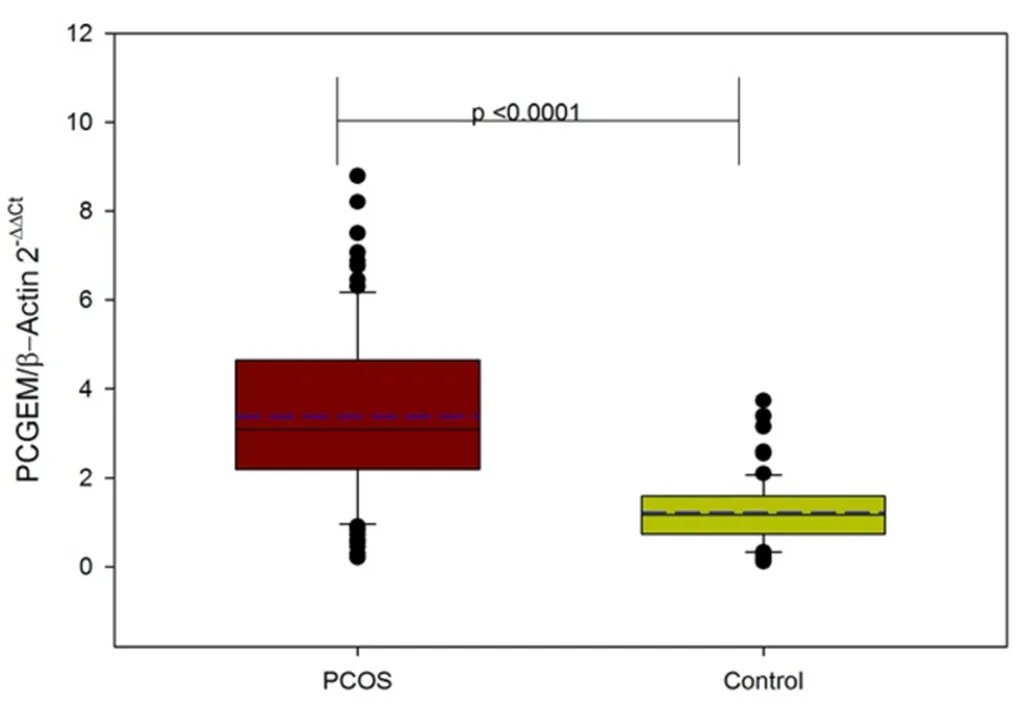In a groundbreaking study published in *Scientific Reports*, researchers have uncovered a significant link between the overexpression of specific long non-coding RNAs (lncRNAs) and the increased risk of Polycystic Ovary Syndrome (PCOS) in women. The study, led by Mudasar Nabi from the Department of Biochemistry at Government Medical College, sheds light on the role of lncRNAs PRNCR1 and PCGEM1 in the hyperactivation of the androgen receptor (AR), a key factor in the pathophysiology of PCOS.
PCOS is a common disorder affecting women of reproductive age, characterized by hyperandrogenism, which can lead to a range of health issues, including infertility, insulin resistance, and cardiovascular diseases. The study aimed to determine the association of lncRNAs PRNCR1 and PCGEM1 with PCOS, given their role as AR coactivators.
The research involved 178 participants, including 105 PCOS cases and 73 controls. The study found that the expression levels of PRNCR1 and PCGEM1 were significantly higher in women with PCOS compared to controls. Notably, lncRNA PRNCR1 showed a positive correlation with testosterone levels, suggesting its potential role in the hyperandrogenism observed in PCOS.
“Our results demonstrated that overexpression of AR coactivator lncRNAs PRNCR1 and PCGEM1 are associated with an increased risk of PCOS in Kashmiri women,” said Mudasar Nabi, the lead author of the study. “These lncRNAs may act as important factors for the hyperactivation of AR and subsequent overexpression of AR regulated genes, thus contributing towards the pathogenesis of PCOS and its clinical manifestations.”
The findings of this study have significant implications for the agricultural sector, particularly in the area of livestock health and productivity. PCOS-like conditions in livestock can lead to reduced fertility and productivity, posing a substantial economic burden on farmers. Understanding the molecular mechanisms underlying hyperandrogenism in PCOS could pave the way for developing targeted therapies and diagnostic tools to manage similar conditions in animals.
Furthermore, the study’s focus on lncRNAs opens up new avenues for research in the field of epigenetics and gene regulation. LncRNAs have emerged as key regulators of gene expression, and their role in various diseases, including PCOS, is an area of growing interest. The identification of PRNCR1 and PCGEM1 as potential biomarkers for PCOS could lead to the development of novel diagnostic tests and therapeutic strategies.
As the agricultural sector continues to evolve, the integration of advanced biotechnological tools and techniques will be crucial in addressing the challenges posed by diseases like PCOS. The findings of this study not only advance our understanding of the molecular basis of PCOS but also highlight the potential of lncRNAs as therapeutic targets and biomarkers in both human and veterinary medicine.
In the words of Mudasar Nabi, “This research provides a foundation for future studies to explore the therapeutic potential of targeting these lncRNAs in the management of PCOS and related conditions.” The study’s insights could shape the future of agricultural biotechnology, leading to improved animal health and productivity, ultimately benefiting the global food supply chain.

